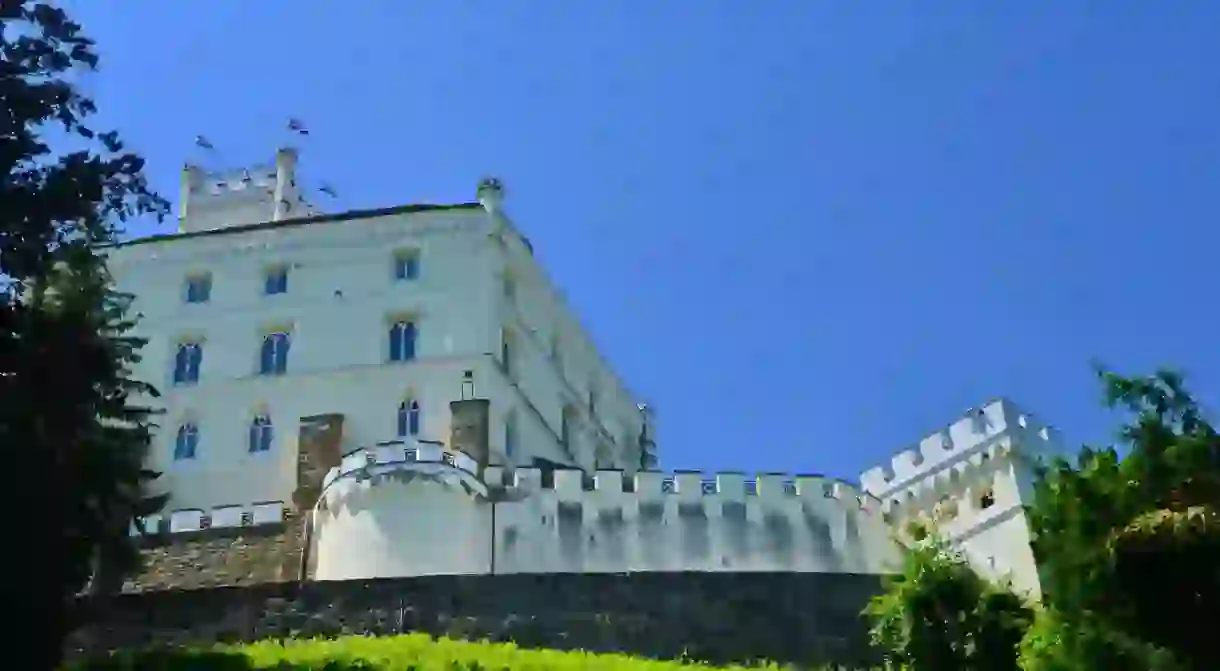The Best Day Trips from Zagreb, Croatia

Variety is the key to the destinations accessible to and from Zagreb within a day’s travels. Stunning national parks, historic castles and world-class skiing slopes are all within easy reach by bus or car, some even by train. Curiosities include the house where legendary national leader Tito was born and the train station where Agatha Christie set her most famous murder mystery.
Kopački rit
Park
Doable in a day from Zagreb, the unspoiled treasures of Kopački rit make the effort to reach the locale worthwhile. A nature park close to Osijek, Kopački rit attracts flocks of migrating birds to its expansive wetlands – and flocks of visitors to observe them. This can be done by boat or via a series of boardwalks, allowing you to spot beech martens, catfish and dice snakes, plus rare plant life such as Siberian cattails and pale yellow irises.
Samobor
Natural Feature

Vinkovci
Historical Landmark, Architectural Landmark
In truth, there is little reason to visit Vinkovci. A modest town in Slavonia, it offers the same as most modest towns in Slavonia: spicy fish soup, a city museum and a bar or two. But Vinkovci has something unique. It was here that Agatha Christie set her most famous crime story, ‘Murder on the Orient Express’. Recently made into yet another film version, this legendary tale ensures that the equally modest station at Vinkovci unwittingly welcomes railway enthusiasts to mill around and snap photos in the vain hope of finding any sign acknowledging the Christie connection.
Plitvice
Park

Sljeme
Building
Sljeme is the green getaway on Zagreb’s doorstep, the upper slopes of the hilly national park of Medvednica. In winter, Sljeme is white rather than green, the top-class ski centre open for both international competition and for locals of all ages and levels to use. Year-round, Sljeme is frequented by families who picnic amid nature or patronise the many chalets converted into cosy local restaurants.
Varaždin
Building
Attractive Varaždin, capital of Croatia only 250 years ago, still has a sense of grandeur even though modern-day geopolitics have given it a somewhat isolated location where the Croatian, Slovenian and Hungarian borders meet. The ornate architectural style prevalent in its palaces, churches and cultural landmarks augments its historic status. The city has a big annual music festival, Varaždin Baroque Evenings; it helps showcase the many castles in the surrounding countryside.
Osijek
Historical Landmark, Architectural Landmark
Croatia’s fourth city of Osijek is rarely explored by tourists despite the recent boom in visitors. Set in the far east of Slavonia close to the border with Serbia, Osijek echoes its Habsburg and Hungarian past, with Baroque architecture, a centrepiece citadel known as the Tvrđa and spicy, pepper-laced cuisine. Its must-see sight, the soaring Church of St Peter & St Paul, is equally impressive with beautiful stained glass and neo-Gothic finery.
Krapina
Building
Arguably the most significant historical site in all Croatia, Krapina is where Zagreb paleontologist Dragutin Gorjanović-Kramberger discovered the remains of a 900-strong Neanderthal community. Since his discovery in 1899, the cave dwelling has collapsed, but, nearby, the Kraneamus Krapina Neanderthal Museum tells the story of this unique find and shows how our ancestors lived some 130,000 years ago.
Đakovo
Historical Landmark, Architectural Landmark
Pretty Đakovo, pronounced ‘Djakovo’, announces itself before you pass endless cornfields to reach it. Poking high up over the horizon, the towers of Đakovo Cathedral beckon visitors to explore this tranquil Slavonian town forever linked with the influential figure responsible for the soaring landmark, Bishop Josip Strossmayer of the late 19th century. Đakovo is also synonymous with white Lipizzaner horses, bred at stables here and a common feature in several folkloric events throughout the year.
Kumrovec
Historical Landmark
At the modern-day border between Slovenia and Croatia, Kumrovec is where Tito was born. It seems an unlikely setting for the man who created Yugoslavia from the rubble of World War II – but somehow an apt one. Now a museum with his statue outside, this brick house would have stood out even back in 1892, when other properties in this farming village would not have been so solid. Built by Tito’s father, it played an infrequent but constant role in the later military leader’s life, reflected in the displays here.
Trakošćan
Building
The area of Croatia north of Zagreb was where many noble families had their estates some 500 years ago. One such was the Drašković dynasty, whose seat was at Trakošćan. We have Major-General Juraj V Drašković to thank for the property’s conversion from crumbling medieval fortress to fairytale castle in the 1800s, not forgetting to add beautifully landscaped gardens. You can find out more about the Drašković clan by admiring the family portraits and original furniture as you tour this popular historic attraction.
Risnjak
Natural Feature, Park
Though lacking the immediate cachet of Plitvice, the national park of Risnjak has its own particular attractions, set amid the wooded slopes of the unspoiled Gorski kotar region. The name gives it away, ris being the word for lynx in Croatian, this rare creature sharing its lofty habitat with chamois and eagles. Brown bears and wild cats have also been spotted. Botanists join the many hikers and climbers who flock here, the Alpine flora adding to the illusion that you might be in Switzerland, not 90 minutes’ drive from Zagreb and an hour from the coast.













